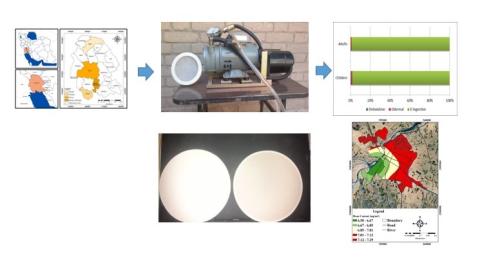You are here
Potential risk assessment of respiratory exposure to heavy metals in the air dust for the metropolitans of Khuzestan Province, Iran

The present study aimed to compare the concentration of 14 metals in the air of 4 cities of Khuzestan province (Ahvaz, Dezful, Mahshahr, and Abadan) in dusty and non-dustynon-dustyy conditions, and determine risk and non-carcinogenic risk in a six-month period from 2017 to 2018 (autumn, winter, and spring). A total of 72 samples were collected in dusty and 72 samples in non-dustydusty conditions at different locations and times using a high volume sampling pump with 110 lit/s flow rate and a fiberglass filter with the pure size of 1μm for 6 hours. Additionally, the concentration of metals was measured using the Spectro Acros Model (Germany) device. Risk assessment and probable ways of entering the body of these metals were determined using USEPA indicators. The average concentration of metals (except for Ni, Mg, and Mn) was higher in dusty conditions non-dustythan in non-dustyy conditions (p < 0.05).The concentration order of heavy metals in dusty and non-dustyy condictions was Zn>Mn>Pb>Ni>Cr>Fe>Cu, and Mg >Mn>Pb>Ni>Cr>Fe, respectively, showing the origin of Zn in the polluted air caused by dust and pollution transfer from outside into cities by this phenomenon. In children and adults, every four cities of Ding (inhalation of dust particles through direct dust consumption) were the main way to attract more metals. Chromium and nickel, chromium and magnesium, and nickel and magnesium were observed among the children of Abadan, Ahvaz, and Dezful and Mahshahr, respectively. The maximum HI indicator was observed for magnesium in Abadan, copper, and magnesium in Ahvaz, chromium, zinc, nickel, and ferrous in Mahshahr in dusty and non-dusty conditions. Moreover, lead had the maximum HI indicator in Abadan and Ahvaz in the non-dustydusty condition. Based on the HI<1 standard, in dusty and clean air conditions, all of the four cities had no concerning issues of non-carcinogenic effects for children and adults.
